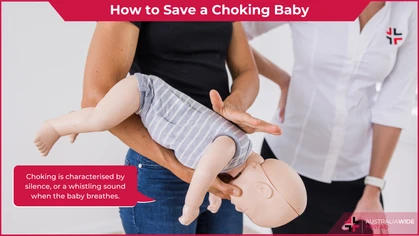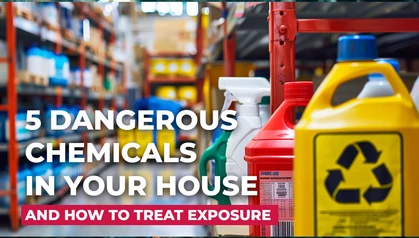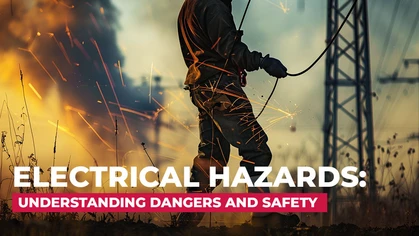The Dangers of Food Poisoning: Understanding the Risks, Symptoms, and Prevention Strategies

Danger
 Millions of people worldwide suffer from food poisoning, which happens when you consume contaminated food or drinks.
The symptoms range from mild to severe and can even be fatal. Knowing the risks, symptoms, and prevention methods is crucial to safeguard yourself from this hazard.
Millions of people worldwide suffer from food poisoning, which happens when you consume contaminated food or drinks.
The symptoms range from mild to severe and can even be fatal. Knowing the risks, symptoms, and prevention methods is crucial to safeguard yourself from this hazard.
How Common is Food Poisoning?
According to the Australian Institute of Food Safety, there are an estimated 4.1 million cases of food poisoning in Australia every year. This number includes cases of illness caused by bacteria, viruses, parasites, and other pathogens that can contaminate food. While many cases of food poisoning are relatively mild and can be treated at home with rest and hydration, some cases can be severe and require hospitalization. The Australian Institute of Food Safety reports that around 31,920 people in Australia are hospitalized due to food poisoning each year. This number highlights the significant impact that food poisoning can have on individuals, families, and communities. Food poisoning can also be fatal in some cases. The same report by the Australian Institute of Food Safety states that approximately 86 death from food poisoning each year. These deaths can be caused by severe dehydration, organ failure, or other complications from severe foodborne illness.Understanding the Risk
Preventing food poisoning is crucial as it can lead to severe health risks, including dehydration, long-term complications, and in rare cases, life-threatening conditions. can lead to dehydration, which can cause serious health problems like low blood pressure, kidney failure, and even death. To prevent dehydration, drinking enough water and fluids when experiencing any symptoms is important. Pregnant women, young children, the elderly, and those with weakened immune systems are more at risk of long-term complications like chronic joint pain, kidney problems, and neurological issues. Food poisoning can be caused by harmful bacteria in foods like dairy, eggs, and meat, contaminated water, improper cooking or washing things, or eating raw or undercooked food. To protect yourself, practice good food safety habits like washing your hands frequently and cooking food to the appropriate temperature.Effects of Food Poisoning
It can cause fatigue, weakness, increased body temperature, and muscle aches. It can also affect your mental health, causing anxiety, depression, and mood swings. Several types of infections can lead to illness, including staphylococcus aureus, which can be found in dairy products. To prevent dehydration and other complications, staying hydrated and keeping a close eye on your immune system is essential.Symptoms of Food Poisoning
The symptoms of illnesses caused by contaminated food can differ based on the type of pathogen that caused the infection. Common symptoms of foodborne illness include- Abdominal cramps
- Nausea
- Vomiting
- Diarrhea
- Fever
- Dehydration
- Dry mouth
- Decreased urine output
- Low blood pressure
Food Poisoning Cases and Types
Different bacteria, viruses, or parasites cause many types of food poisoning. Some of the most common types of food poisoning include:-
E. coli infection:
- Symptoms: Severe diarrhea, abdominal cramps, and kidney failure.
- Sources: Raw or undercooked ground beef, contaminated produce, or unpasteurized milk.
-
Salmonella infection:
- Symptoms: Diarrhea, fever, and abdominal cramps.
- Sources: Raw or undercooked eggs, poultry, and meat.
-
Campylobacter infection:
- Symptoms: Diarrhea, abdominal cramps, and fever.
- Sources: Raw or undercooked poultry, unpasteurized milk, and contaminated water.
-
Staphylococcus aureus infection:
- Symptoms: Nausea, vomiting, and stomach cramps.
- Sources: Dairy products, meats, and prepared foods.
Treatments for Food Poisoning
Food poisoning can occur quickly, so if you suspect that you have it, it is essential to seek medical attention immediately. In severe cases, hospitalization may be required to provide fluids and electrolytes intravenously. When it comes to treating food poisoning, rest and hydration are key. It is crucial to drink enough water or sports drinks to prevent dehydration.
Preventing Food Poisoning
Practicing good food safety habits is the best way to prevent food poisoning. This includes:Practice Good Food Safety Habits
One of the best ways to prevent food poisoning is to practice good food safety habits. This includes washing your hands frequently, cooking food to the appropriate temperature, refrigerating perishable foods promptly, and avoiding cross-contamination between raw and cooked foods.Pay Attention to Food Recalls
:Stay informed about food recalls to make sure you're not eating anything that could be contaminated.Be Careful When Eating Out
Be sure to choose reputable restaurants with a good food safety track record. Avoid eating raw or undercooked foods, and be cautious of foods sitting out for an extended period.Stay Hydrated
The risk of dehydration is significantly associated with food poisoning. Drinking enough fluid to stay hydrated is essential, especially in hot weather. Drinking enough fluid can also help prevent the symptoms of food poisoning, including nausea, vomiting, and diarrhea. Drinking fruit juice or sports drinks is recommended to help replace lost electrolytes.Know Your Risk Factors
Some people are at higher risk of developing food poisoning than others. Pregnant women, young children, the elderly, and people with weakened immune systems are particularly vulnerable. If you fall into one of these categories, it is essential to take extra precautions to avoid food poisoning.Cook meat Thoroughly
Cooking meat to the appropriate temperature is crucial to avoid contracting food poisoning. .Use a food thermometer when cooking meat to ensure it's cooked to the right temperature. This varies depending on the type of meat.Store food Properly
Proper food storage is crucial to preventing food poisoning. Refrigerate perishable foods promptly and avoid leaving them at room temperature for extended periods.The Role of the Health Department
Ensuring the safety of the food we consume is of utmost importance, and the health department plays a vital role in achieving this goal. They do so by meticulously inspecting food establishments and vestigating outbreaks to identify the root cause of contamination. This helps prevent more cases of food poisoning, which can be detrimental to one's health. Therefore, any suspected food contamination incidents must be reported to the local health department immediately. By doing so, we can collectively ensure that our food is safe for consumption and that we lead healthy lives.Conclusion
Food poisoning is a prevalent occurrence worldwide, and it can cause mild to severe symptoms and, in rare cases, death.- To avoid getting sick from food, you should wash your hands and utensils often, cook food well, and put perishable items in the fridge immediately. These preventive measures can greatly reduce the risk.
- Drinking enough fluids is crucial to prevent dehydration, a significant risk associated with food poisoning.
- A person suffering from food poisoning may experience abdominal cramps, nausea, vomiting, diarrhea, fever, and dehydration.
- Different bacteria, viruses, or parasites cause food poisoning, including E. coli, Salmonella, and Campylobacter.
Originally published at
https://www.australiawidefirstaid.com.au/resources/the-dangers-of-food-poisoning
as part of the Australia Wide First Aid Articles Library









